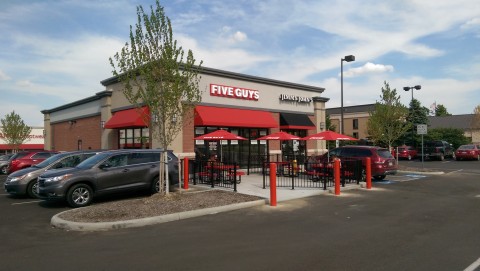
January 10, 2017 – When professionals in the real estate industry hear the term “1031,” they typically think of single tenant, triple-net leased properties. Drugstores. Restaurants. Banks. This certainly is a past and present trend, but compressing cap rates in these sectors have caused many private exchange buyers to look elsewhere for higher returns. The retail model with perhaps the highest uptick in recent demand has been the newly-constructed two to three tenant buildings, especially outparcels to larger shopping centers. Tenant categories many times include at least one, if not two, restaurants, and may include cellular phone stores, mattress, dental, and a host of other small format retailers. While cap rates for these properties can dip into the 5% cap rate range, by and large they have been trading between 6% and 6.75% depending on tenancy and market.
A prime example is The Shoppes of Wooster, a newly-built, two-tenant retail building leased to franchisees for Jimmy John’s and Five Guys. Located in a small town in Northern Ohio, the property was nationally marketed by Kyle Hartung of Goodman Real Estate for a matter of weeks, and eventually sold to a California-based private investor in a 1031-exchange. After multiple offers were received for the property at and near the asking price, the property eventually sold for approximately a 6.67% cap rate, which was above its asking price. Because this property and many others like it house trendy tenant names, many times with strong lease guarantors, and feature new construction, private investors have been quick to set their sights on them. With many single tenant deals garnering cap rates under 5-6%, and the cream of the crop dipping below 4% (and in some cases 3%), this asset class has become a very attractive option. With the rapid expansion of quick-casual restaurant chains and other tenants in the 1,500-2,800 square foot size range, this is a trend we expect to continue.
